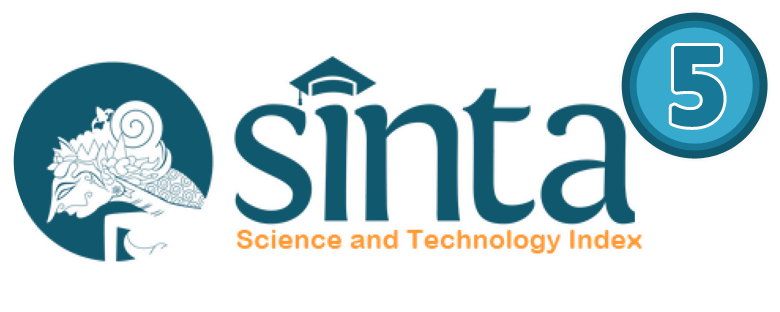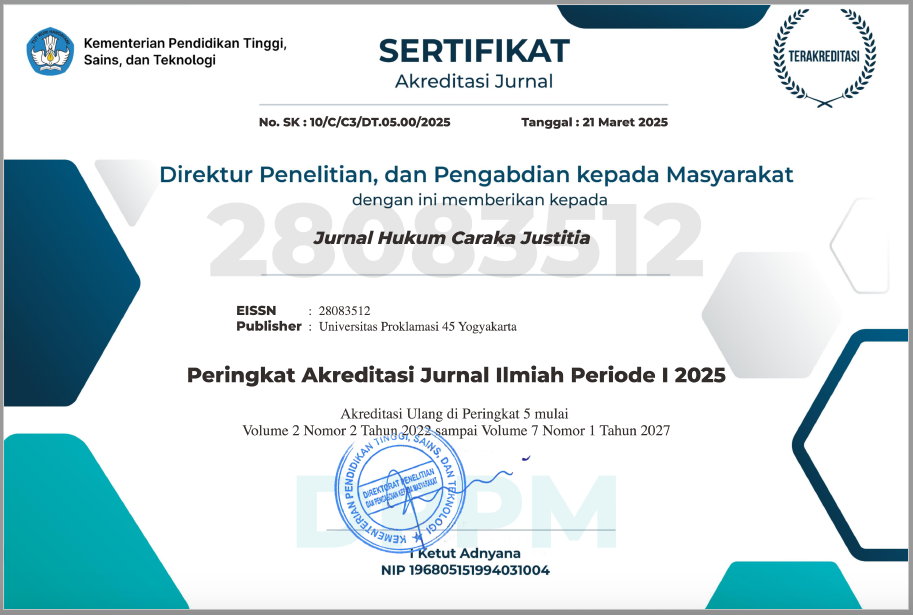Kearifan Lokal dan Hukum Adat Suku Dani di Papua
DOI:
https://doi.org/10.30588/jhcj.v3i1.1507Keywords:
Customary Law, Local Wisdom.Abstract
Papua's cultural wealth will make a lot of positive contributions developing behavior and policy making. In addition, the wealth of Papua not always on natural resources. Papua is also rich in culture. This culture is worthy of being a capital to build the future, even strengthening peace and tolerance in Papua. The purpose of this study is to describe and analyze local wisdom which is a form of existence of customary law that has developed in the Dani Tribe of Papua Province. The research method used is descriptive qualitative with an ethnographic approach. The findings in this study are local wisdom and customary law that developed in Wosilimo Village, Uslimo District, Jayawijaya Regency, Papua, including the Iki Paleg Tradition, Dani traditional clothing, the Dani kinship system and the Wam Mane Ceremony.
There are many local wisdoms and customary laws that are spread all over Papua with the myths and culture that develop with them. The Dani tribe, which today still adheres to local wisdom and customary laws, should be appreciated because their ancestral heritage will be well preserved along with the development of the times and human resources that continue to develop in the Dani tribe, local wisdom and customary law are increasingly being criticized but still preserving this culture as part of the ancestral heritage of the Dani tribe.
References
Artikel Jurnal
A, Zonggonau. “Kebudayaan Potong Jari sebagai Simbol Duka Suku Moni di Desa Ugidimi Distrik Bibida Kabupaten Paniai Provinsi Papua”. Holistik: Journal of Social and Culture 10, no. 19 (Juni 2017): 1-20.
B.B, Putro, & Nadira. “Makna Dibalik Tradisi Niki Paleg Suku Dani di Papua”. Commed: Jurnal Komunikasi dan Media 3, no. 2 (Februari 2019): 159-167. https://forum.upbatam.ac.id/index.php/commed/article/download/1257/764.
Koeswinarno. “Memahami Etnografi Ala Spradley”. Jurnal SMaRT 1, no. 2 (Desember 2015): 257-265. https://journal.blasemarang.id/index.php/smart/article/download/256/176.
Reeves, Scott, Ayelet Kupera & Brian David hodges. “Qualitative Research Methodologies: Etnography”. BMJ: British Medical Journal 337, no. 7668 (August 2008): 512-514.
Suhendro, Hasmika. “Eksistensi Tradisi Iki Paleg Suku Dani Pada Masyarakat Suku Dani Pada Masyarakat Pedalaman Suku Dani”. Jurnal Georafflesia: Artikel Ilmiah Pendidikan Geografi 6, no. 1 (Juni 2021): 47-57. https://journals.unihaz.ac.id/index.php/ georafflesia/article/download/1842/1037.
Buku
Afwan, Budi Asyhari. Mutiara Terpendam Papua : Potensi Kearifan Lokal untuk Perdamaian di Tanah Papua. Yogyakarta: Program Studi Agama dan Lintas Budaya Sekolah Pascasarjana, Universitas Gadjah Mada, 2015.
Alua, Agus A. Ap Warek menurut Kepercayaan Masyarakat Balim. Jayapura: STFT Fajar Timur, 2003.
Beni, Ahamd Saebani. Pengantar Antropologi. Bandung: CV Pustaka Setia, 2012.
Bushar, Muhammad.. Asas-Asas Hukum Adat (Suatu Pengantar). Jakarta: Pradnya Paramitha, 1981.
Ellen, R.F. Etnographic Research: A Guide to General Conduct. London: Academic Press, 1984.
Hammersley, M & P. Atkinson. Etnographic Principles in Practice. London: Cambrige University Press, 1990.
H.A.M., Effendy. Pengantar Hukum Adat. Semarang: CV Tradan Jaya, 1994.
Koentjaraningrat. Pengantar Ilmu Antropologi. Jakarta: Rineka Cipta, 2013.
Laksanto, Utomo. Hukum Adat. Depok: Rajagrafindo Persada, 2016.
Mansoben, J R. Sistem Politik Tradisional di Irian Jaya. Leiden: LIPI-RIJKS Universiteit Leiden, 1995.
Miles, M.B, Hubberman, A.M & Saldana, J. Qualitative Data Analysis, A Methods Sourcebook, Edition 3. USA: Sage Publications, 2014.
Sastrodiharjo, Sudjito. Hukum Adat dan Realitas Kehidupan. Yogyakarta: Fakultas Hukum Universitas Islam Indonesia, 1998.
Setiady, Tolib. Intisari Hukum Adat Indonesia (Kajian Kepustakaan). Bandung: Alfabeta, 2013.
Soepomo. Hukum Adat. Jakarta: Prandya Paramita, 1993.
Soepomo. Kedudukan Hukum Adat di Kemudian Hari. Jakarta: Pustaka Rakyat, 2019.
Soerojo, Wignjodipoero. Pengantar & Asas-Asas Hukum Adat. CV. Jakarta: Haji Masagung, 1976.
Sugiyono. Metode Penelitian Pendidikan (Pendekatan Kuantitatif, kualitatif dan R&D). Bandung: Alfabeta, 2014.
Suriyaman, Masturi Pide. Hukum Adat Dahulu, Kini dan akan Datang. Jakarta: Kencana, 2014.
Spradley, James P. Metode Etnografi. Yogyakarta: Tiara wacana, 1997.
Vallenhoven, Van. Orientasi dalam Hukum Adat Indonesia. Jakarta: Cendana Press, 1983.
Internet
Alecia, Nesa. “Iki Palek, Tradisi Potong Jari Sebagai Tanda Kehilangan dan Kesetiaan”. https://nationalgeographic.grid.id/read/13946164/iki-palek-tradisi-potong-jari-sebagai-tanda-kehilangan-dan-kesetiaan (diakses 16 April 2023).
Downloads
Published
How to Cite
Issue
Section
License
Copyright (c) 2023 Bresca Merina, Muhaimin Muhaimin

This work is licensed under a Creative Commons Attribution 4.0 International License.
Authors who publish with JHCJ agree to the following terms:
Authors retain copyright and grant the JHCJ right of first publication with the work simultaneously licensed under a Creative Commons Attribution 4.0 International License that allows others to share (copy and redistribute the material in any medium or format) and adapt (remix, transform, and build upon the material) the work for any purpose, even commercially with an acknowledgment of the work's authorship and initial publication in JHCJ.
Authors are able to enter into separate, additional contractual arrangements for the non-exclusive distribution of the journal's published version of the work (e.g., post it to an institutional repository or publish it in a book), with an acknowledgment of its initial publication in JHCJ. Authors are permitted and encouraged to post their work online (e.g., in institutional repositories or on their website) prior to and during the submission process, as it can lead to productive exchanges, as well as earlier and greater citation of published work (See The Effect of Open Access).














